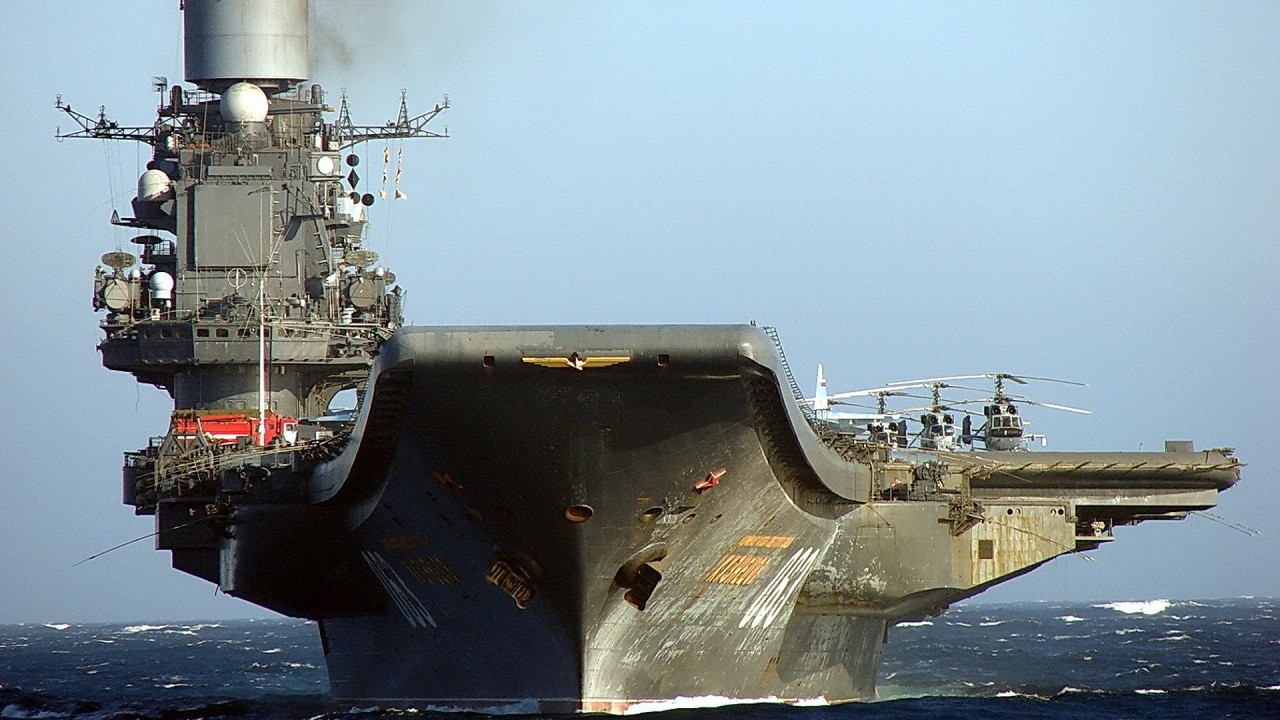Robert Farley

What future does the Russian Navy have? While Russia’s naval forces have played an important role in the war their performance has been, at best, mixed. The Russian Navy has successfully blockaded ports and launched missiles against targets across Ukraine, but along the way it lost its Black Sea flagship, lost one of its most important amphibious warfare vessels, failed to ensure control of Snake Island, and failed to prosecute decisive amphibious operations in the Ukrainian littoral.
The Russian military will in the future face substantial budgetary constraints. While it is true that Russia’s economy has withstood sanctions better than expected thus far, this situation is unlikely to hold in the long term, especially if the United States can maintain the coalition. It is not obvious at this point that the Navy will be able to command sufficient resources to maintain itself, much less rebuild.
Russian Navy: The Strategic Outlook
Strategically, Russia’s naval situation has changed considerably over the past several months. The Baltic is for all intents and purposes closed to Russia upon the accession of Finland and Sweden to NATO. In no conceivable conflict could Russian warships (even submarines) use the Baltic without running the risk of imminent destruction. The accession of Finland complicates Russian access in the north, giving NATO better eyes on the major Russian naval bases in the Arctic, including the ballistic missile fleet. Russia has the most flexibility in the Pacific, but Japanese re-armament and the increasingly fraught relationship between Tokyo and Moscow make significant action difficult to contemplate.
Indeed, even the Black Sea is now perilous for Russia. If Ukraine survives this war as a political entity it will undoubtedly possess anti-ship weapons that will make operations dangerous. Turkey, notwithstanding its often difficult relationship with the rest of NATO, now holds the key to naval power in the Black Sea.
Russian Navy: What About the Surface Fleet?
The Russian surface fleet is in trouble, starting with the industrial base. Russia has reportedly canceled procurement of additional Project 22610 patrol vessels over concerns about performance. The average construction period of the Admiral Gorshkov frigates is currently running at more than a decade, with only three of the ships having been delivered since the first was laid down in 2006. Theoretically Russia could purchase warships from abroad (China is the most likely and, really, the only prospective exporter), but this would require currency and also an admission of domestic industrial shortcomings.
The existing fleet has big problems. One looming question involves Russia’s aircraft carrier, the Admiral Kuznetsov. The Kuznetsov has served as the object of fun over the past fifteen years as much or more than serving as an active combat vessel, having suffered multiple mechanical mishaps including several fires and the collapse of a crain. She has not left port since 2017, meaning that Russia’s cadre of naval aviators has almost certainly ceased to exist as an effective force. At 32 years she is hardly the oldest carrier in the world, but it’s hard to envision a long post-refit lifespan.
The two other large surface units in the fleet are the two surviving battlecruisers of the Kirov class, Pyotr Velikiy and Admiral Nakhimov. The latter has been in refit for the last two decades, while the former has as of yet played no significant role in the war. The two ships have considerable “show the flag” value and Pyotr Velikiy has often been used in such a role. However, much like the late, unlamented Moskva and her sisters, they have minimal ground attack capability and would both make excellent targets. Both the Kirovs and the Slavas are exceedingly old in any case and cannot be regarded as plausible foundations for the future of Russian naval power.
Russia’s amphibious flotilla has proven singularly useless during the war, except to the degree that it temporarily pinned Ukrainian forces in Odessa. The inability of the flotilla to conduct an assault on Odessa or to keep Snake Island supplied has demonstrated a significant shortfall in Russian capabilities. The presence of the large, flat decked amphibious warship such as the French Mistral might have had an impact in the early days of the conflict, although Ukraine’s acquisition of substantial numbers of anti-ship missiles would put such a vessel in considerable danger now. Russia has laid down two amphibious assault ships of similar size to the Mistrals, but it is not obvious that the government will be able to pay for the vessels or that Russian industry can actual construct them.
Those Submarines
On the upside, the submarine fleet remains the core of Russian naval power. Russia’s military shipbuilding industry withered after the collapse of the Soviet Union, but submarine construction recovered rapidly. Russian conventional and nuclear submarines remain competitive with foreign boats. In the war against Ukraine, submarines have helped enforce the blockade while also launching strategic missile attacks on targets around the country. But while submarines can offer a lot in terms of capability, they cannot replace all of the functions of an operational surface fleet.
Parting Thoughts
The history of Russian naval power is sketchy at best, and there’s a strong argument that Russia should, for the near and medium-term, simply abandon any pretensions to naval power beyond patrol craft and its submarine fleet. On the one hand, Russia enjoys the happy coincidence that its surface fleet cannot survive in nearly any conceivable conflict against a major power and that it likely can no longer afford to build or maintain a surface fleet.
No comments:
Post a Comment